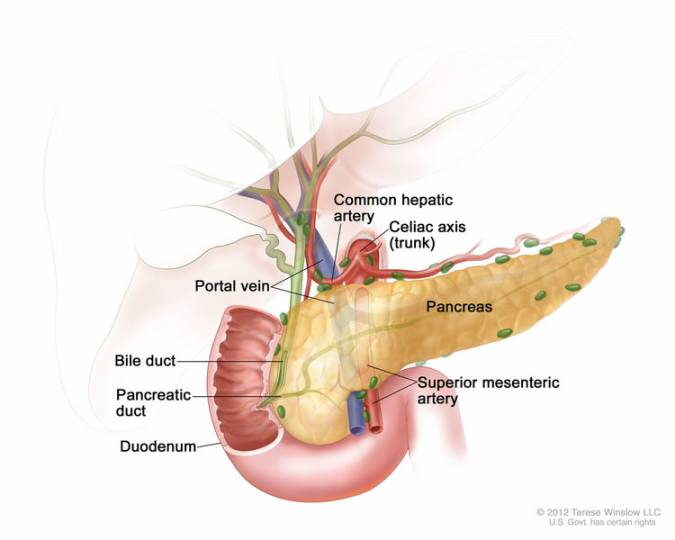Pancreatectomy is removal by surgery of part or all of the pancreas, and often other organs that may be attached to it. The most common indications for this surgery are pancreatic cancer or recurrent bouts of severe pancreatitis. It is a difficult surgery that has long reaching complications, but it may be the only means by which certain conditions can be addressed or possibly cured. The pancreas has several important functions. It makes enzymes that help to digest food and it also creates insulin, which is vital to regulating blood sugar levels. Diseases of the pancreas, including cancer, may affect function. Still, removal of this important part of the body has to be weighed against the side effects it will cause. People will need enzyme and insulin support if the full pancreas is removed. It isn’t always fully removed and many people undergo a partial pancreatectomy.

A pancreaticoduodenectomy is an operation that works to remove the head of the pancreas. This is often performed to treat pancreatic cancer, as about 75 percent of pancreatic cancers develop in the head of the organ. The procedure involves removing part of your pancreas, your duodenum, your gallbladder and part of your bile duct. The goal of the operation is to remove the entire tumor while preserving as much healthy tissue as possible.
Named after Dr. Allen Whipple who was the first American to perform the operation, the Whipple procedure involves the removal of the “head” (wide part) of the pancreas next to the duodenum. The operation also involves the removal of the duodenum, a portion of the bile duct, the gallbladder and sometimes part of the stomach. Once all the tissues and organs have been removed, the surgeon reconnects the remaining intestine, bile duct and pancreas.
A distal pancreatectomy is a procedure the focuses on removing the tail end of the pancreas while preserving the head. The operation is oftentimes performed to treat tumors or cancer in the area, but it can also be needed if disease develops in the tail of the pancreas. Since the tail of the pancreas is located near the spleen, sometimes a splenectomy is also performed and both the pancreatic tail and the spleen are removed. This procedure can oftentimes be performed using minimally invasive techniques, which is much less taxing on the patient and leads to a quicker recovery. A distal pancreatectomy can usually be performed in about 2 to 4 hours.
As the name implies, a central pancreatectomy is an operation that involves removing the middle part of the pancreas, while leaving the head and the tail of the organ. It is such a specialized procedure that only a few hospitals and surgeons in the nation can perform the operation. It is performed to remove cancer or tumors, and by leaving the head and tail, the patient is at a decreased risk for developing insulin-dependent diabetes. The procedure takes about 2 to 4 hours to complete.
A total pancreatectomy involves removing a number of different organs in your endocrine system, including the entire pancreas. The surgeon will also remove your duodenum, part of the stomach, your gallbladder, part of your bile duct, your spleen and some of the surrounding lymph nodes. It is performed when disease or cancer has taken hold of the pancreas and there is no part worth saving. Since the insulin-producing pancreas is removed, the patient will become dependent on insulin for the rest of their life. It takes about 5 to 7 hours to perform a total pancreatectomy.
Inflammation or scar tissue may cause a blockage in part of the pancreas.Opening a pancreatic duct allows the pancreas to work normally and often relieves pain.